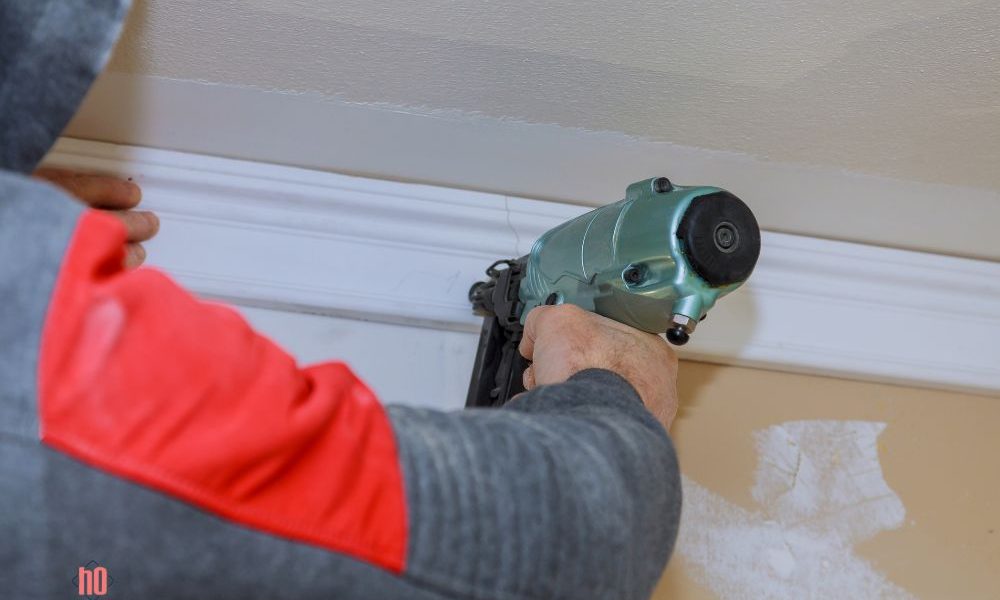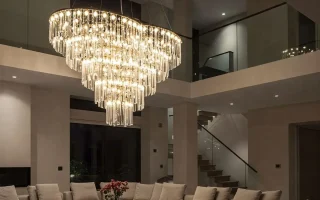Ceiling trim molding is an often overlooked feature that can make a big difference in any home renovation. Homeowners might focus on flooring, wall paint, or furniture, but ceiling trim molding can add that distinct touch of elegance and detail. Whether you’re aiming for a modern look or something more traditional, ceiling trim molding offers versatility and an opportunity to elevate the style of any room.
Why Ceiling Trim Moulding is a Must-Have for Home Renovations
When renovating, ceiling trim molding might not always be top of mind, but it’s a small detail that makes a big impact. This decorative feature adds depth and dimension to rooms, bridging the gap between walls and ceilings seamlessly. It can help soften transitions in spaces with high ceilings or create a more intimate feel in rooms with lower ceilings. Additionally, ceiling trim molding helps hide imperfections where the wall meets the ceiling, giving your home a polished, clean look. For homes with crown molding, adding ceiling trim can complement the design, bringing uniformity to your space. This architectural feature also increases the aesthetic value of your home, adding a high-end touch without the need for a complete overhaul. Overall, ceiling trim molding adds a sense of completion, making spaces feel finished and more thoughtfully designed.
Different Types of Ceiling Trim Molding for Various Aesthetics
Ceiling trim molding comes in a variety of styles, from simple, minimalistic designs to more intricate patterns. Choosing the right style depends on the aesthetic you’re aiming for. Homeowners often choose from styles like crown molding, cove molding, or beadboard, each with distinct characteristics.
- Crown Molding is the most common type, characterized by its elegant, angled edges. It is often used in traditional homes to add an upscale, classic look. It works best in rooms with high ceilings.
- Cove Molding: This is a more subtle option, featuring a concave curve rather than sharp angles. It’s often used in modern or minimalist designs and creates a smooth transition between walls and ceilings.
- Beadboard: This is an excellent choice for a rustic or farmhouse-style home. Beadboard molding adds texture and is often used in kitchens or bathrooms to provide a warm, cozy atmosphere.
No matter what style you choose, ceiling trim molding is a versatile option that can be tailored to suit different design preferences. Whether you want something grand or understated, there’s a style that will fit seamlessly with your home’s aesthetic.
Installation Tips for Ceiling Trim Molding
Installing ceiling trim molding can be a DIY project, but it requires precision. If you’re confident with tools and measurements, it’s a cost-effective way to enhance your living space. Here are some tips to make the installation process smoother:
- Measure Carefully: Before making any cuts, ensure you’ve measured your room’s dimensions accurately. Incorrect measurements can lead to gaps or awkward angles.
- Cutting at the Right Angle: Miter saws are commonly used for cutting ceiling trim molding at the correct angle. Practice on scrap pieces to ensure your cuts are precise.
- Use Adhesive and Nails: A combination of adhesive and finishing nails ensures that the molding stays securely in place. For best results, apply adhesive to the back of the molding before nailing it into the wall.
- Caulk the Gaps: Once the molding is installed, use caulk with a caulking trowel to fill any gaps between the molding and the ceiling or wall. This creates a seamless, finished look.
- Paint After Installation: It’s best to paint the ceiling trim molding after installation, as this will allow you to cover up any scuffs or nail holes. Choose a color that complements your ceiling and walls for a cohesive look.
If DIY isn’t your style, hiring a professional can save time and ensure the job is done efficiently. If you’re not confident with handy jobs around the house, a skilled installer can make the difference between an excellent finish and a subpar one.
How Ceiling Trim Molding Affects Room Proportions
Ceiling trim molding does more than just add visual appeal; it can also influence how a room feels in terms of size and proportion. For example, rooms with high ceilings can sometimes feel too vast or empty. By adding crown molding or other types of ceiling trim, you can visually lower the ceiling, creating a more intimate atmosphere. In contrast, in rooms with lower ceilings, you’ll want to avoid overly thick or heavy ceiling trim molding, as this can make the space feel smaller and more cramped. Instead, opt for slim, simple designs that add definition without overwhelming the room. Ceiling trim molding can also be used to highlight specific architectural features. For instance, if your home has exposed beams or coffered ceilings, adding trim around these areas can enhance their beauty and draw attention to them. In this way, ceiling trim molding can be used strategically to improve a room’s overall design and proportions.
Budget-Friendly Ceiling Trim Molding Options
Renovations can be expensive, but adding ceiling trim molding doesn’t have to break the bank. Budget-friendly options are available that still provide an exceptional finish. Many homeowners opt for medium-density fiberboard (MDF) or polyurethane molding as alternatives to traditional wood.
- MDF Molding: This is a highly affordable option that can be painted to mimic the look of real wood. MDF is durable and resistant to warping, making it a popular choice for homeowners on a budget.
- Polyurethane Molding: Lightweight and easy to install, polyurethane is another cost-effective material. It’s also resistant to moisture, making it ideal for bathrooms and kitchens. While it’s not as sturdy as wood, it offers a good balance between affordability and aesthetics.
When working within a budget, you can also opt to install ceiling trim molding in key areas like the living room, dining room, or foyer. This allows you to create a focal point in high-traffic areas without the expense of trimming the entire home.
Ceiling Trim Molding Maintenance and Care
Once you’ve installed ceiling trim molding, maintaining it is relatively simple. Regular dusting and occasional cleaning will keep it looking its best. Depending on the material, you might want to take a few extra steps to ensure longevity. For wooden molding, periodic painting or staining may be necessary to keep it looking fresh. If you’ve opted for MDF or polyurethane, you’ll mainly need to focus on cleaning and ensuring it doesn’t get damaged by moisture. In high-humidity areas, it’s crucial to ensure the molding is sealed properly to prevent any warping or damage. Overall, ceiling trim molding is a low-maintenance feature that offers long-lasting appeal. With proper care, it can enhance the beauty of your home for years to come.
A Finishing Touch That Makes a Big Difference
Ceiling trim molding is an outstanding addition to any home renovation project. Its ability to elevate a room’s design, improve proportions, and hide imperfections makes it a versatile choice for homeowners looking to enhance their living spaces. Whether you opt for intricate crown molding or a simple cove design, this feature can add value and style to your home without a hefty price tag. With so many options available, ceiling trim molding allows you to tailor your home’s look to your preferences while creating a polished, finished feel throughout your living space.




